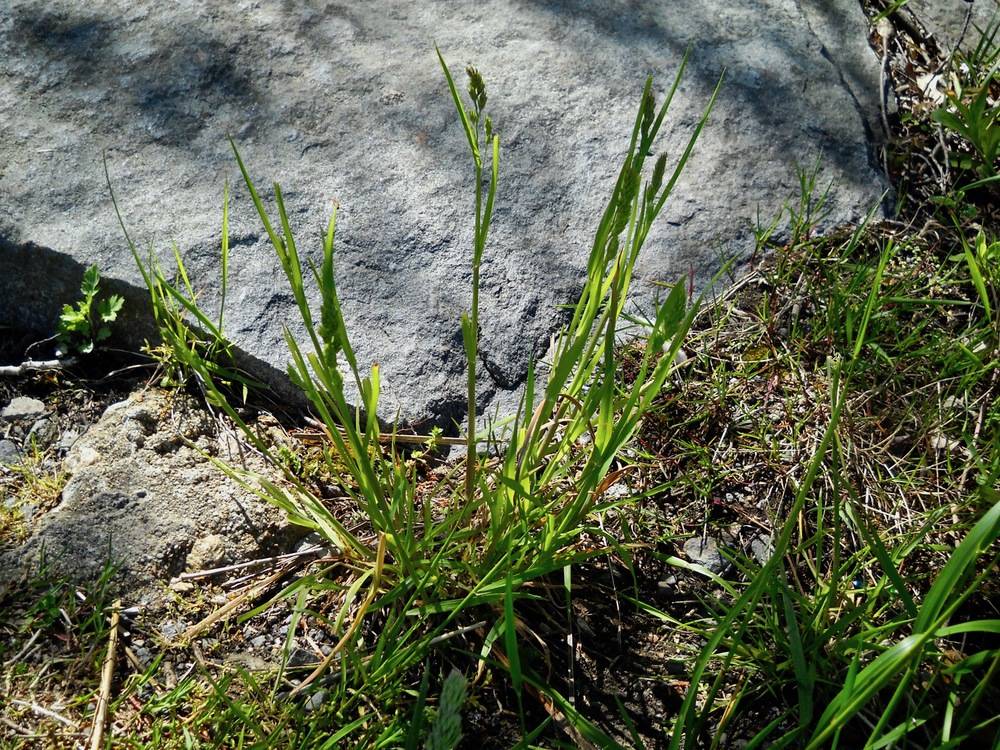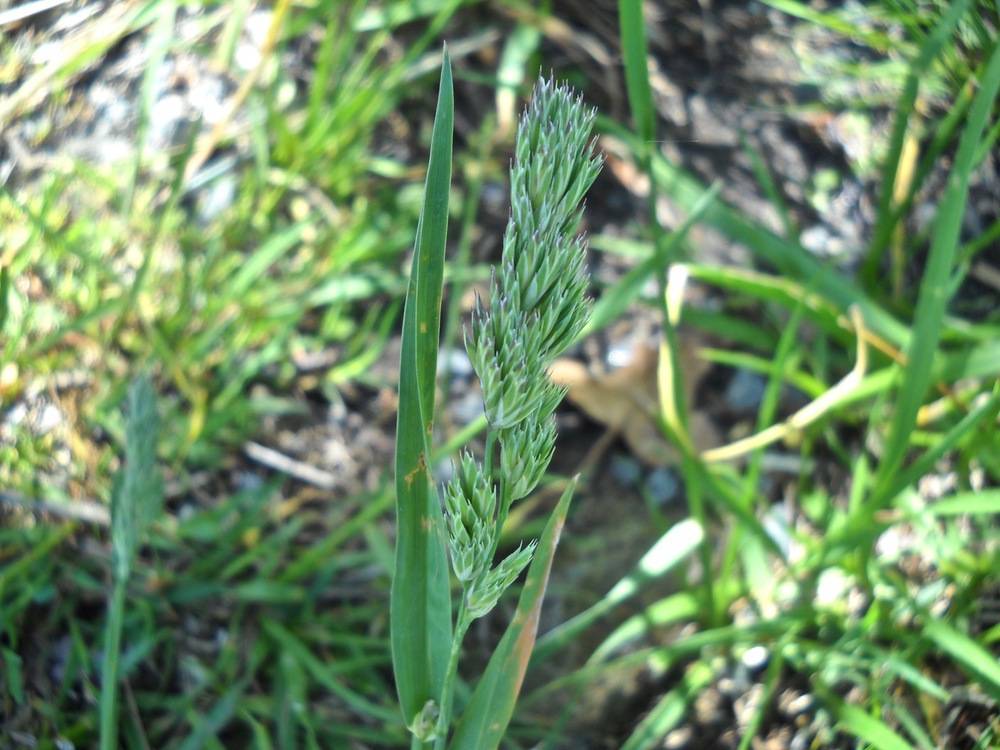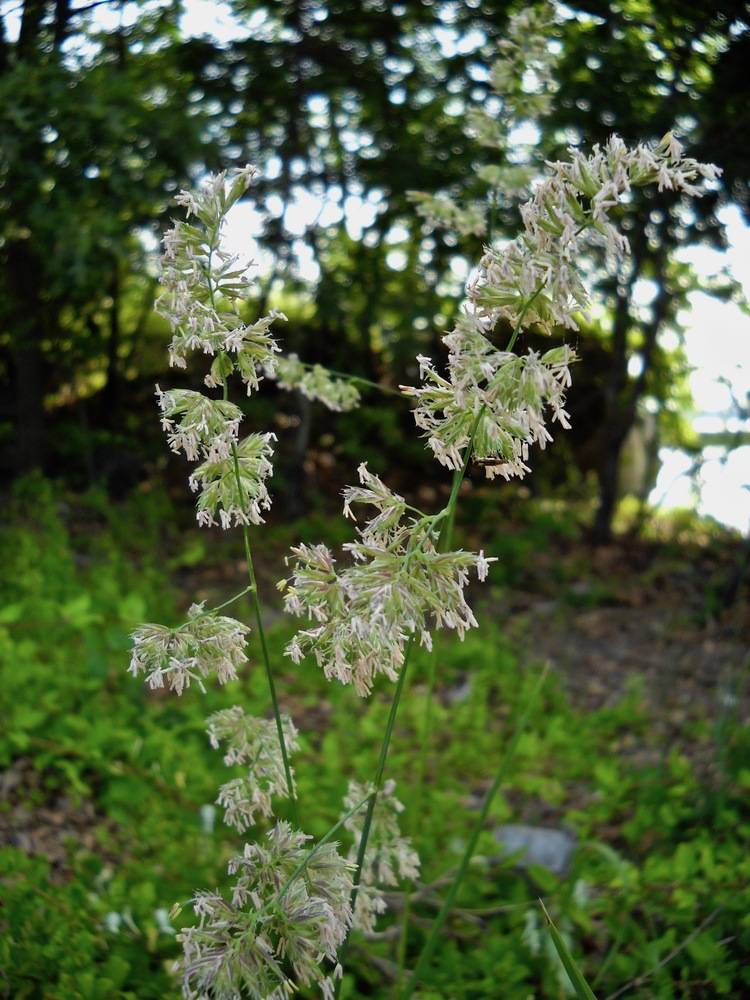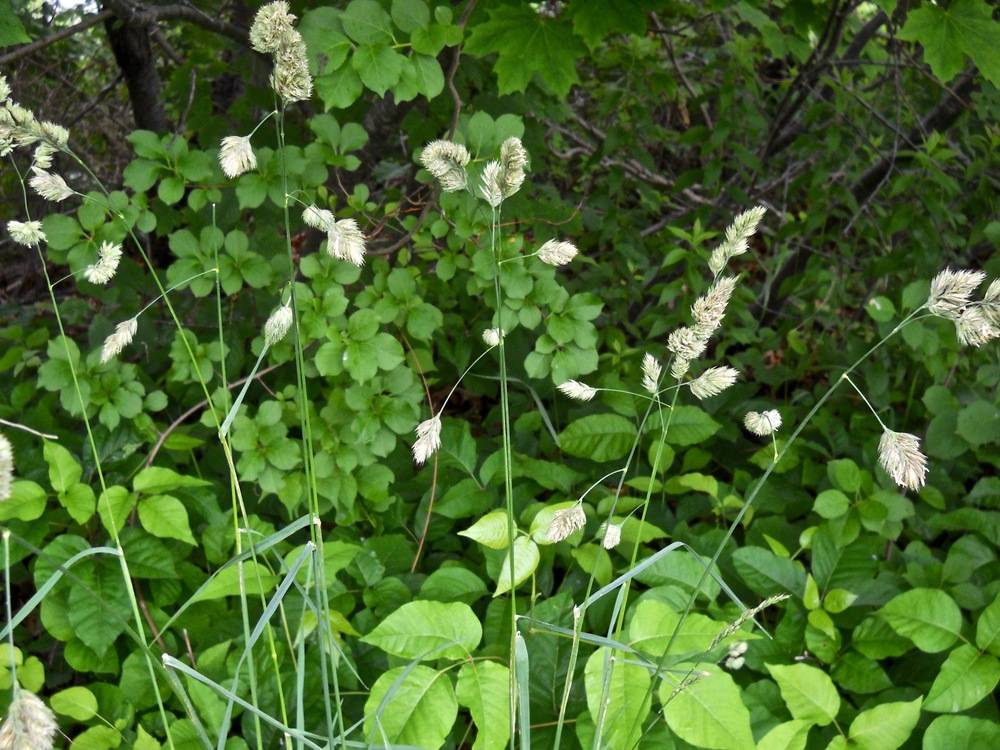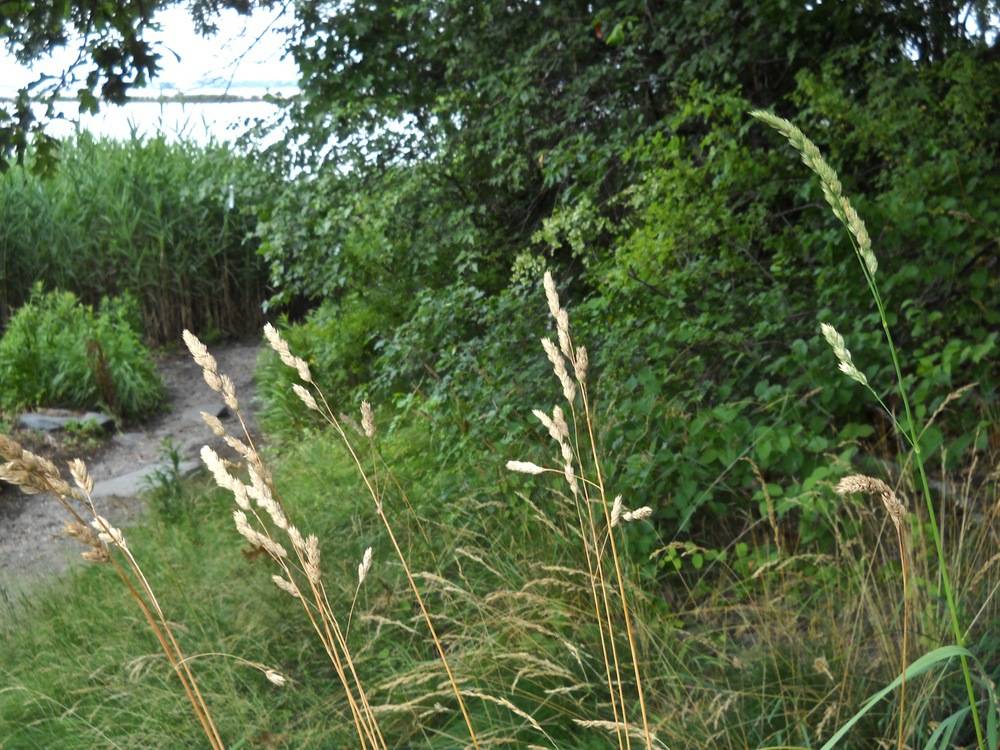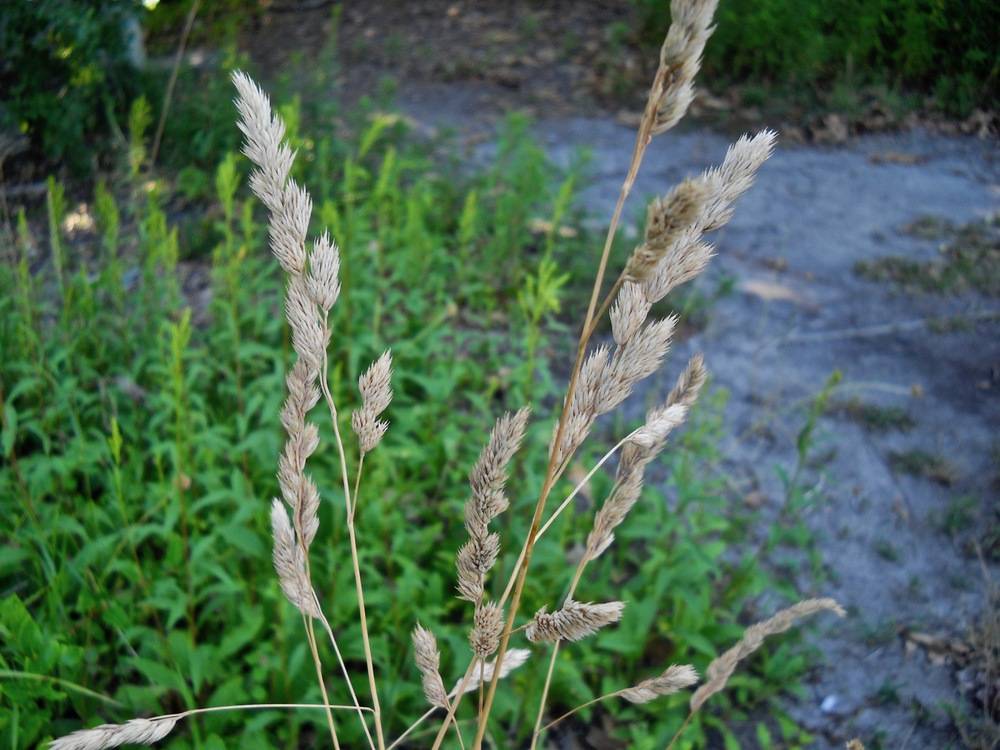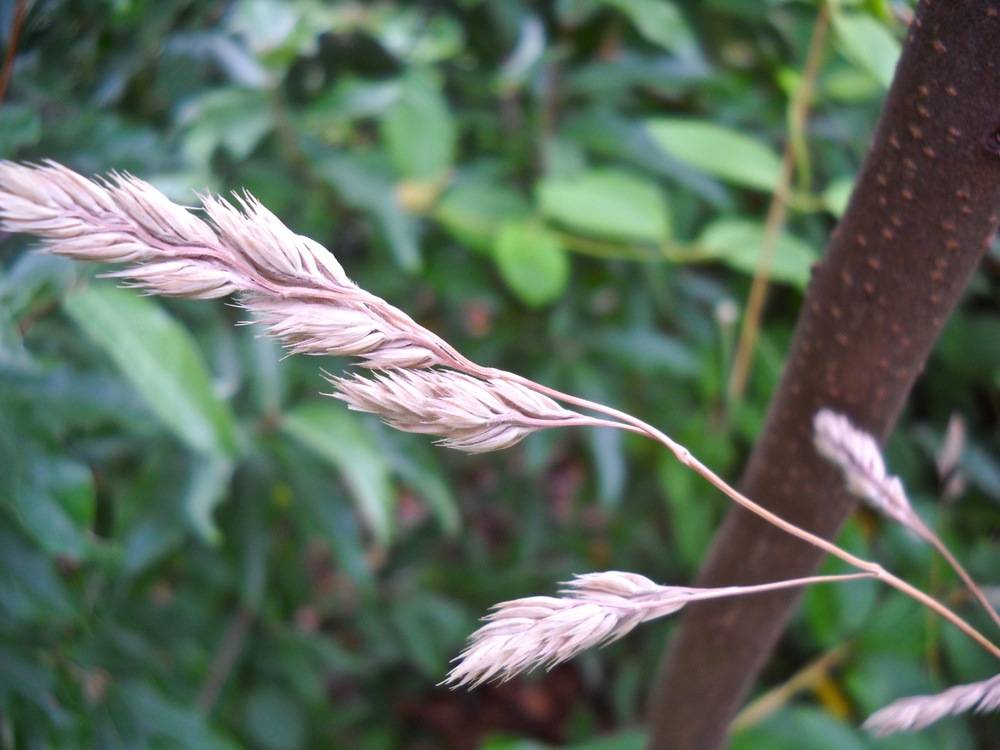orchard grass
Orchard grass is native to Europe and North Africa and was introduced to North America in the late 1700's. It is still considered to be a good forage and continues to be cultivated for hay and pasture. Besides offering good nutrition for various livestock, it also adds nitrogen to the soil and can provide erosion control. However, it is not favored by all farmers. Its bunchgrass growing habit results in a rough terrain and thus a rather bumpy tractor ride for the modern farmer.
This perennial cool season grass has long escaped the agricultural setting and can be found growing in recently disturbed soil along roadsides, forest edges, wooded slopes, freshwater shore lines and riverbanks. At Salter Grove, small bunches of orchard grass can be found here and there along the Upland Trail.
Its attractive flowering panicles would earn orchard grass an ornamental status if they were not so short-lived. Once the seeds are mature, they form a conspicuous seed spike that can become pendulous on the slender stem. Despite the precarious foothold thus presented, actively breeding American goldfinches nonetheless feed heartily on the plump seeds in the fall.
For more information:
https://gobotany.nativeplanttrust.org/species/dactylis/glomerata/?pile=poaceae
https://www.marylandbiodiversity.com/viewSpecies.php?species=3963
https://www.minnesotawildflowers.info/grass-sedge-rush/orchard-grass
https://hayandforage.com/article-1549-the-oddities-of-orchardgrass.html
https://www.gardeningknowhow.com/edible/grains/cover-crops/orchardgrass-information.htm

